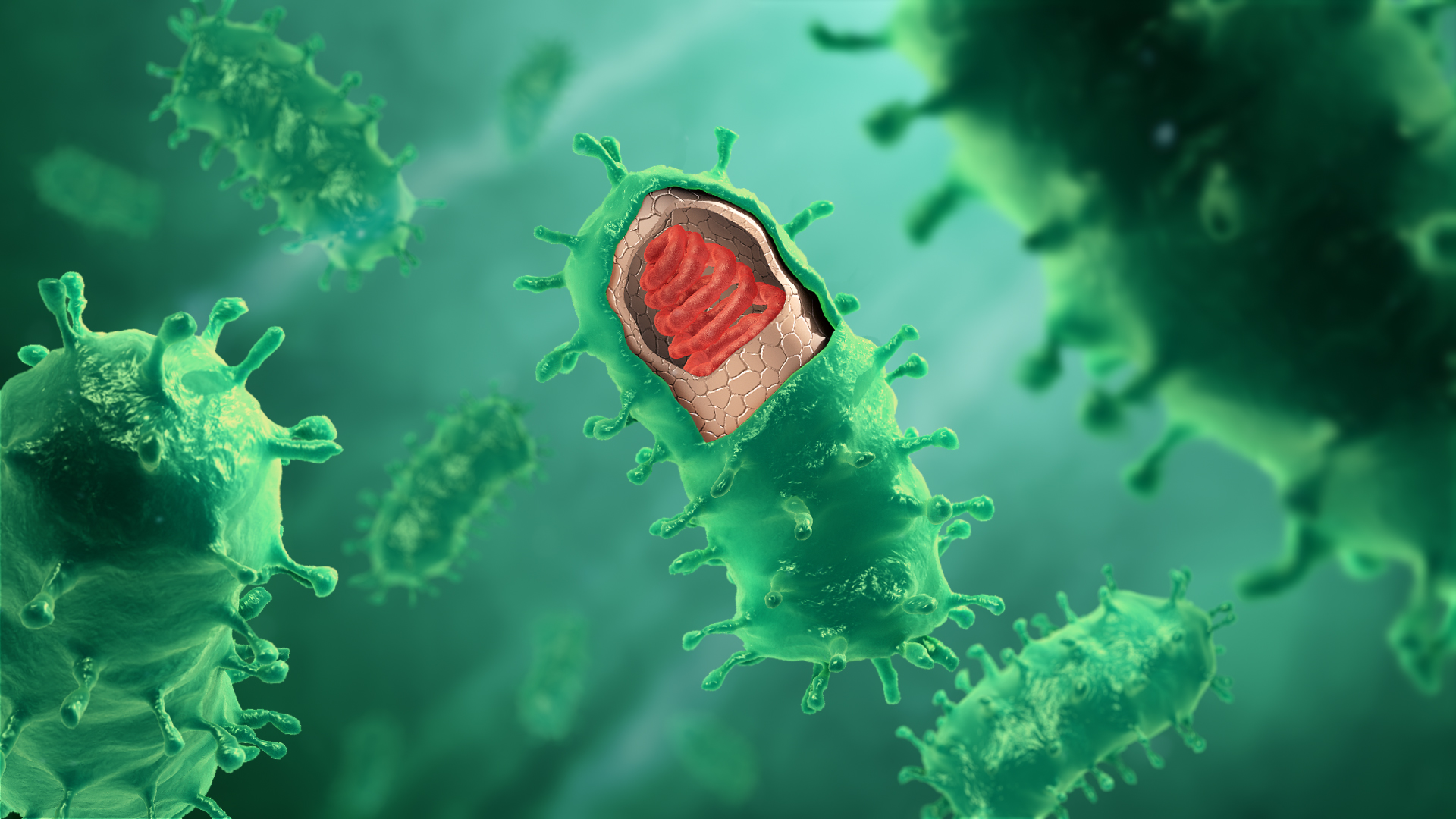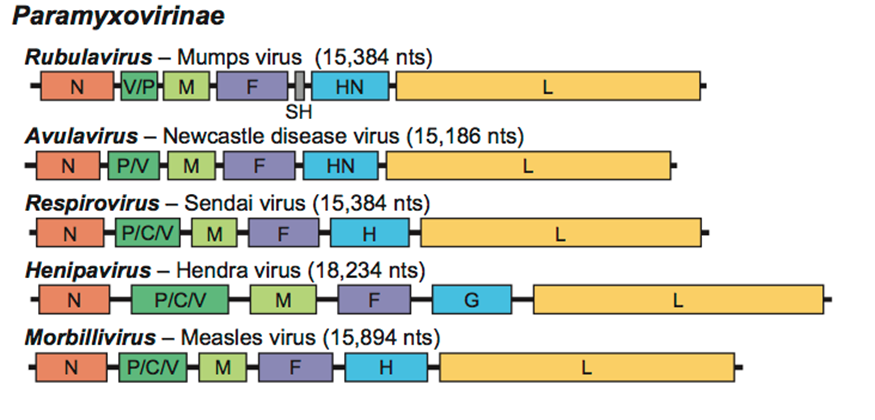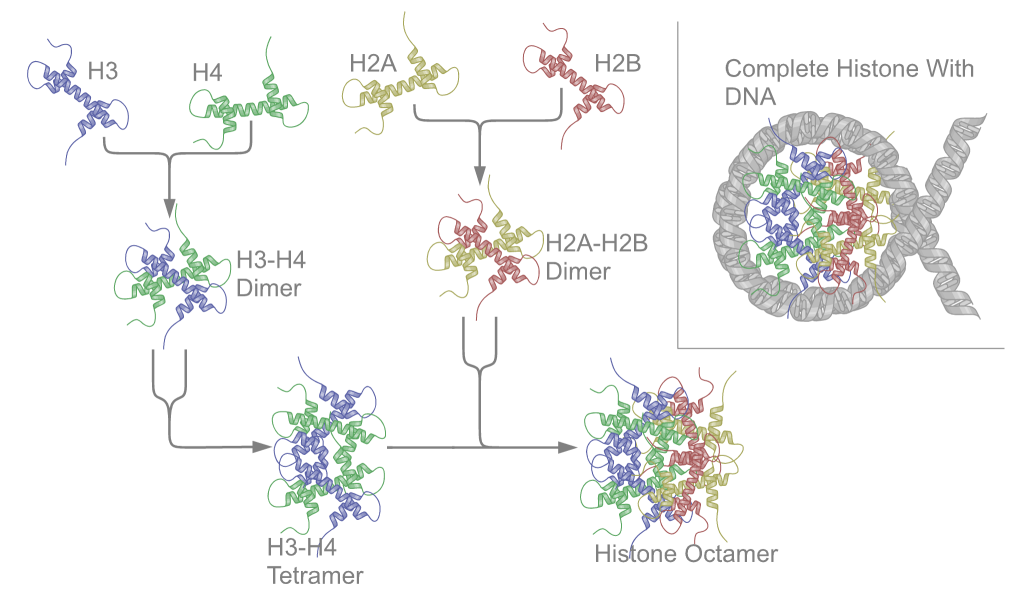|
Rhabdovirus
''Rhabdoviridae'' is a family of negative-strand RNA viruses in the order ''Mononegavirales''. Vertebrates (including mammals and humans), invertebrates, plants, fungi and protozoans serve as natural hosts. Diseases associated with member viruses include rabies encephalitis caused by the rabies virus, and flu-like symptoms in humans caused by vesiculoviruses. The name is derived from Ancient Greek , meaning rod, referring to the shape of the viral particles. The family has 62 genera, most assigned to four subfamilies. Structure The individual virus particles (virions) of rhabdoviruses are composed of RNA, protein, carbohydrate and lipid. They have complex bacilliform or bullet-like shapes. All these viruses have structural similarities and have been classified as a single family. The virions are about 75 nm wide and 180 nm long. Rhabdoviruses are enveloped and have helical nucleocapsids and their genomes are linear, around 11–15 kb in length. Rhabdoviruses ca ... [...More Info...] [...Related Items...] OR: [Wikipedia] [Google] [Baidu] |
Rabies Virus
Rabies virus (''Lyssavirus rabies'') is a neurotropic virus that causes rabies in animals, including humans. It can cause violence, hydrophobia, and fever. Rabies transmission can also occur through the saliva of animals and less commonly through contact with human saliva. Rabies virus, like many Rhabdoviridae, rhabdoviruses, has an extremely wide host range. In the wild it has been found infecting many mammalian species, while in the laboratory it has been found that birds can be infected, as well as cell cultures from mammals, birds, reptiles and insects. Rabies is reported in more than 150 countries and on all continents except Antarctica. The main burden of disease is reported in Asia and Africa, but some cases have been reported also in Europe in the past 10 years, especially in returning travellers. Rabies virus has a cylindrical morphology and is a member of the ''Lyssavirus'' genus of the ''Rhabdoviridae'' family. These viruses are Viral envelope, enveloped and have a Ne ... [...More Info...] [...Related Items...] OR: [Wikipedia] [Google] [Baidu] |
Rabies
Rabies is a viral disease that causes encephalitis in humans and other mammals. It was historically referred to as hydrophobia ("fear of water") because its victims panic when offered liquids to drink. Early symptoms can include fever and abnormal sensations at the site of exposure. These symptoms are followed by one or more of the following symptoms: nausea, vomiting, violent movements, uncontrolled excitement, fear of water, an inability to move parts of the body, confusion, and loss of consciousness. Once symptoms appear, the result is virtually always death. The time period between contracting the disease and the start of symptoms is usually one to three months but can vary from less than one week to more than one year. The time depends on the distance the virus must travel along Peripheral nervous system, peripheral nerves to reach the central nervous system. Rabies is caused by lyssaviruses, including the rabies virus and Australian bat lyssavirus. It is spread when an i ... [...More Info...] [...Related Items...] OR: [Wikipedia] [Google] [Baidu] |
Viral Envelope
A viral envelope is the outermost layer of many types of viruses. It protects the genetic material in their life cycle when traveling between host cells. Not all viruses have envelopes. A viral envelope protein or E protein is a protein in the envelope, which may be acquired by the capsid from an infected host cell. Host cell infection process Numerous human pathogenic viruses in circulation are encased in lipid bilayers, and they infect their target cells by causing the viral envelope and cell membrane to fuse. Although there are effective vaccines against some of these viruses, there is no preventative or curative medicine for the majority of them. In most cases, the known vaccines operate by inducing antibodies that prevent the pathogen from entering cells. This happens in the case of enveloped viruses when the antibodies bind to the viral envelope proteins. The membrane fusion event that triggers viral entrance is caused by the viral membrane fusion protein. Many envelo ... [...More Info...] [...Related Items...] OR: [Wikipedia] [Google] [Baidu] |
Indiana Vesiculovirus
''Indiana vesiculovirus'', formerly ''Vesicular stomatitis Indiana virus'' (VSIV or VSV) is a virus in the family ''Rhabdoviridae''; the well-known '' Rabies lyssavirus'' belongs to the same family. VSIV can infect insects, cattle, horses and pigs. It has particular importance to farmers in certain regions of the world where it infects cattle. This is because its clinical presentation is identical to the very important foot and mouth disease virus. reviewed and published by WikiVet, accessed 12 October 2011. The virus is zoonotic and leads to a flu-like illness in infected humans. It is also a common laboratory virus used to study the properties of viruses in the family ''Rhabdoviridae'', as well as to study viral evolution. Properties ''Indiana vesiculovirus'' is the prototypic member of the genus ''Vesiculovirus'' of the family ''Rhabdoviridae''. VSIV is an arbovirus, and its replication occurs in the cytoplasm. Natural VSIV infections encompass two steps, cytolytic infections ... [...More Info...] [...Related Items...] OR: [Wikipedia] [Google] [Baidu] |
Neuraminidase
Exo-α-sialidase (, sialidase, neuraminidase; systematic name acetylneuraminyl hydrolase) is a glycoside hydrolase that cleaves the glycosidic linkages of neuraminic acids: : Hydrolysis of α-(2→3)-, α-(2→6)-, α-(2→8)- glycosidic linkages of terminal sialic acid residues in oligosaccharides, glycoproteins, glycolipids, colominic acid and synthetic substrates Neuraminidase Enzyme, enzymes are a large family, found in a range of organisms. The best-known neuraminidase is the viral neuraminidase, a drug target for the prevention of the spread of influenza infection. Viral neuraminidase was the first neuraminidase to be identified. It was discovered in 1957 by Alfred Gottschalk (biochemist), Alfred Gottschalk at the WEHI, Walter and Eliza Hall Institute in Melbourne. The viral neuraminidases are frequently used as antigenic determinants found on the surface of the influenza virus. Some variants of the influenza neuraminidase confer more virulence to the virus than others. Ot ... [...More Info...] [...Related Items...] OR: [Wikipedia] [Google] [Baidu] |
Viral Matrix Protein
Viral matrix proteins are structural proteins linking the viral envelope with the virus core. They play a crucial role in virus assembly, and interact with the RNP complex as well as with the viral membrane. They are found in many enveloped viruses including paramyxoviruses, orthomyxoviruses, herpesviruses, retroviruses, filoviruses and other groups. An example is the M1 protein of the influenza virus, showing affinity to the glycoproteins inserted in the host cell membrane on one side and affinity for the RNP complex molecules on the other side, which allows formation at the membrane of a complex made of the viral ribonucleoprotein at the inner side indirectly connected to the viral glycoproteins protruding from the membrane. This assembly complex will now bud In botany, a bud is an undeveloped or Plant embryogenesis, embryonic Shoot (botany), shoot and normally occurs in the axil of a leaf or at the tip of a Plant stem, stem. Once formed, a bud may remain for some ti ... [...More Info...] [...Related Items...] OR: [Wikipedia] [Google] [Baidu] |
Paramyxoviridae
''Paramyxoviridae'' (from Ancient Greek, Greek ''para-'' “by the side of” and ''myxa'' “mucus”) is a family of negative-strand RNA viruses in the order ''Mononegavirales''. Vertebrates serve as natural hosts. Diseases associated with this family include measles, mumps, and respiratory tract infections. The family has nine subfamilies that contain 23 genera. Structure Virions are enveloped and can be spherical or pleomorphic and capable of producing filamentous virions. The diameter is around 150 nm. Genomes are linear, around 15kb in length. Fusion proteins and attachment proteins appear as spikes on the virion surface. Matrix proteins inside the envelope stabilise virus structure. The nucleocapsid core is composed of the genomic RNA, nucleocapsid proteins, phosphoproteins and polymerase proteins. Genome The genome is non-segmented, negative-sense RNA, 15–19 kilobases in length, and contains six to 10 genes. Extracistronic (noncoding) regions include: * A 3’ ... [...More Info...] [...Related Items...] OR: [Wikipedia] [Google] [Baidu] |
Hemagglutination
Hemagglutination, or haemagglutination, is a specific form of agglutination that involves red blood cells (RBCs). It has two common uses in the laboratory: blood typing and the quantification of virus dilutions in a haemagglutination assay. Blood typing Blood type can be determined by using antibodies that bind to the A or B blood group antigens in a sample of blood. For example, if antibodies that bind the A blood group are added and agglutination occurs, the blood is either type A or type AB. To determine between type A or type AB, antibodies that bind the B group are added and if agglutination does not occur, the blood is type A. If agglutination does not occur with either antibodies that bind to type A or type B antigens, then neither antigen is present on the blood cells, which means the blood is type O. In blood grouping, the patient's serum is tested against RBCs of known blood groups and also the patient's RBCs are tested against known serum types. In this way th ... [...More Info...] [...Related Items...] OR: [Wikipedia] [Google] [Baidu] |
Nucleoprotein
Nucleoproteins are proteins conjugated with nucleic acids (either DNA or RNA). Typical nucleoproteins include ribosomes, nucleosomes and viral nucleocapsid proteins. Structures Nucleoproteins tend to be positively charged, facilitating interaction with the negatively charged nucleic acid chains. The tertiary structures and biological functions of many nucleoproteins are understood.Graeme K. Hunter G. K. (2000): Vital Forces. The discovery of the molecular basis of life. Academic Press, London 2000, . Important techniques for determining the structures of nucleoproteins include X-ray diffraction, nuclear magnetic resonance and cryo-electron microscopy. Viruses Virus genomes (either DNA or RNA) are extremely tightly packed into the viral capsid. Many viruses are therefore little more than an organised collection of nucleoproteins with their binding sites pointing inwards. Structurally characterised viral nucleoproteins include influenza, rabies, Ebola, Bunyamwera, Schm ... [...More Info...] [...Related Items...] OR: [Wikipedia] [Google] [Baidu] |
Zoonosis
A zoonosis (; plural zoonoses) or zoonotic disease is an infectious disease of humans caused by a pathogen (an infectious agent, such as a virus, bacterium, parasite, fungi, or prion) that can jump from a non-human vertebrate to a human. When humans infect non-humans, it is called reverse zoonosis or anthroponosis. Major modern diseases such as Ebola and salmonellosis are zoonoses. HIV was a zoonotic disease transmitted to humans in the early part of the 20th century, though it has now evolved into a separate human-only disease. Human infection with animal influenza viruses is rare, as they do not transmit easily to or among humans. However, avian and swine influenza viruses in particular possess high zoonotic potential, and these occasionally recombine with human strains of the flu and can cause pandemics such as the 2009 swine flu. Zoonoses can be caused by a range of disease pathogens such as emergent viruses, bacteria, fungi and parasites; of 1,415 pathogens known t ... [...More Info...] [...Related Items...] OR: [Wikipedia] [Google] [Baidu] |





